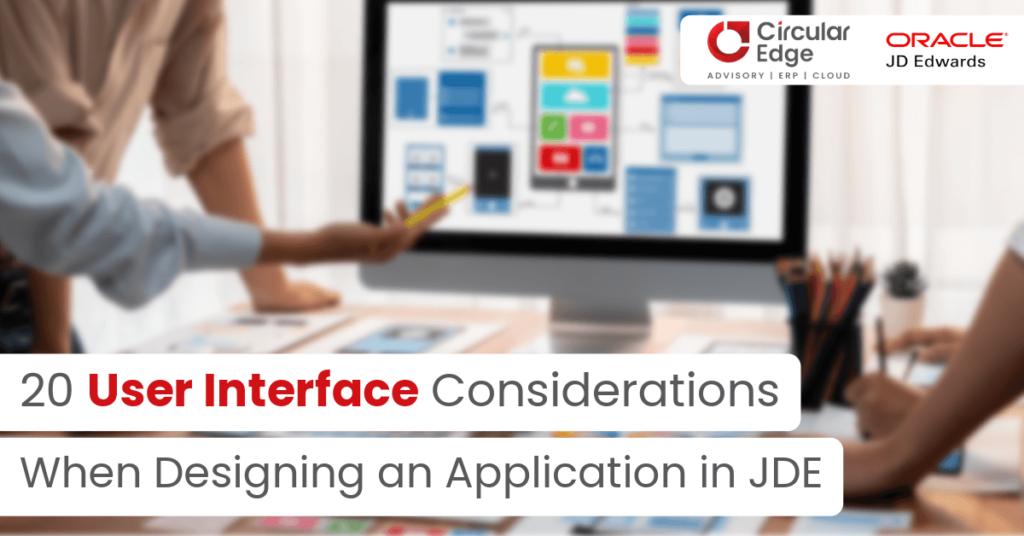Author : Deepak Sharma, Sr. Consultant & JDE Expert
When designing the Application User Interface (UI) in JD Edwards (JDE), several important considerations should be taken into account to ensure an efficient, user-friendly, and productive experience for the end-users. Here are some key Application UI considerations:
Consistency: Maintain consistency in UI elements across different applications and forms. Consistency in layout, colors, fonts, and terminology creates a familiar and intuitive user experience.
Simplicity: Keep the UI simple and uncluttered. Avoid overwhelming users with too many options or unnecessary information on the screen.
User-Friendly Navigation: Ensure easy navigation and logical flow between different forms and applications. Users should be able to find what they need quickly and efficiently.
Responsive Design: Design the UI to be responsive and adaptable to different screen sizes and devices, including desktops, tablets, and smartphones.
Clear and Descriptive Labels: Use clear and descriptive labels for buttons, fields, and other UI elements to help users understand their purpose without confusion.
Error Handling: Implement clear and informative error messages that guide users on how to correct any issues they encounter.
Accessibility: Ensure that the UI is accessible to users with disabilities by following accessibility standards and guidelines.
Performance: Optimize the UI for performance to reduce loading times and minimize delays in user interactions.
User Roles and Permissions: Design the UI to reflect different user roles and permissions. Only display relevant options and data based on the user’s access level.
Help and Documentation: Provide contextual help and documentation to guide users on how to use various features and functionalities.
Data Validation: Implement data validation to prevent users from entering incorrect or invalid data, reducing errors and ensuring data integrity.
Confirmation Dialogs: Use confirmation dialogs when performing critical actions (e.g., deleting records) to prevent accidental data loss.
User Preferences: Allow users to customize their UI preferences, such as language date formats, and default settings.
Search and Filtering: Implement effective search and filtering options to help users find specific data quickly.
Keyboard Shortcuts: Include keyboard shortcuts to improve user productivity and efficiency.
Consolidate Related Information: Organize related information logically and cohesively to avoid clutter and confusion.
Batch Processing: If the application involves batch processing or long-running tasks, provide status updates and progress indicators to keep users informed.
By incorporating these considerations into the design of the JDE Application UI, you can create a more efficient, user-friendly, and enjoyable experience for your end-users, ultimately increasing productivity and user satisfaction.


